Health Care > QUESTIONS & ANSWERS > UC Course Portal SP1 BS in Health Sciences HSCI320 Medical Sociology 001, SP1_Week 3 Quiz 3 Part 1. (All)
UC Course Portal SP1 BS in Health Sciences HSCI320 Medical Sociology 001, SP1_Week 3 Quiz 3 Part 1. Grade 26 out of 30_87%
Document Content and Description Below
UC Course Portal ▶︎ SP(1) 2017 ▶︎ BS in Health Sciences ▶︎ HSCI320 Med Sociology (001) SP1 2017 ▶︎ Week 3 ▶︎ Quiz 3 8 Question 1 In Mark 0 out of 1 Question 2 The data... in the Dutton (1978) study on health care utilization among the poor fa hypothesis. Select one: a. Systems barrier. b. Financial coverage. c. Culture of poverty. d. Disparities. e. None of the above. Page: 174 Systems barrier. A number of factors have promoted self-care on the part of laypersons. Which is Select one: a. The shift in disease patterns from acute to chronic illnesses. b. Dissatisfaction with professional medical care that is depersonalized. c. Recognition of the limits of modern medicine. d. The increasing awareness of alternative healing practices. e. All of the above are factors promoting self-care. Page: 164 All of the above are factors promoting self-care. QUIZ NAVIGATION Show one page at a time Finish review 1 8 9 10 11 12 13 14 15 16 17 18 19 20 21 22 23 24 25 26 27 28 29 30 Question 3 Question 4 Question 5 The higher an individual’s socioeconomic position, the __________ ethnic the p Select one: a. Less. b. More. c. Balanced. d. Really. e. None of the above. Page: 168 Less. What is defined as activity undertaken by individuals for the purpose of maintain preventing health problems, or achieving a positive body image? Select one: a. Health lifestyles. b. Illness behavior. c. Health behavior. d. Health promotion. e. Premedical. Page: 145 Health behavior. Hurricane Katrina is an example of a(n): Select one: a. Natural disaster. b. Large-scale disaster. c. Cause for grief. d. Extreme situation. e. All of the above. Page: 130 All of the above. Question 6 Question 7 Question 8 According to Suchman, persons in a cosmopolitan group were found to: Select one: a. Demonstrate high ethnic exclusivity. b. Distrust health professionals. c. Be very dependent on others while sick. d. All of the above. e. None of the above. Page: 165 None of the above. What is an example of a stressful situation? Select one: a. Death. b. Divorce. c. Marriage. d. A and B only. e. All of the above. Page: 116 All of the above. What is homeostasis? Select one: a. Changing constantly. b. Physiological adaptation. c. Not moving or adapting. d. Physically growing. e. None of the above. Page: 122 Physiological adaptation. Question 9 Question 10 In Mark 0 out of 1 Question 11 In Mark 0 out of 1 What refers to routine physical examinations, immunizations, prenatal care, den disease and cancer, and other services intended to ensure good health and to m occurs? Select one: a. Routine checkups. b. Health behavior. c. Preventive care. d. Health lifestyles. e. None of the above. Page: 156 Preventive care. Health lifestyles are common to which social class? Select one: a. Upper classes. b. Upper and middle classes. c. Middle classes. d. Lower classes. e. All of the above. Page: 151 All of the above. Besides the type of change and the speed with which it occurs, the extent to wh may also be important. Libby Ruch (1977) investigated this over 30 years ago a actually has three dimensions. Which is NOT a dimension? Select one: a. Degree of change evoked. b. Undesirability of change. c. Depth of change expected. d. Aspect of one’s life that is affected. e. None are dimensions. Page: 134 Depth of change expected. Question 12 Question 13 Question 14 In Mark 0 out of 1 The process of seeking medical help involving a group of potential consultants, extending outward to more select individuals until professionals are consulted, i Select one: a. Medical referral system. b. Lay-referral system. c. Professional referral system. d. Health networking process. e. None of the above. Page: 176 Lay-referral system. What are collective patterns of health-related behavior based on choices from o according to their life chances? Select one: a. Health lifestyles. b. Illness behavior. c. Health behavior. d. Health promotion. e. Premedical. Page: 146 Health lifestyles. According to the sociologist Max Weber, lifestyles are based upon a person’s re Select one: a. Consumption. b. Needs. c. Wants. d. Production. e. All of the above. Page: 147 Consumption. Question 15 Question 16 Question 17 The extent of physiological damage or change within an individual depends on: Select one: a. The stimulus situation. b. An individual’s capacity to deal with the stimulus situation. c. The individual’s preparation by society to meet problems. d. The influence of society’s approved modes of behavior. e. All of the above. Page: 127 All of the above. Medical sociologists divide health-oriented behavior into two general categories _________ behavior. Select one: a. Preventative; disease causing. b. Health; illness. c. Health lifestyles; sickness. d. Health seeking; spreading. e. None of the above. Page: 145 Health; illness. Who is NOT part of the lay-referral system? Select one: a. Family. b. Friends. c. Neighbors. d. All are part of the lay-referral system. e. None are part of the lay-referral system. Page: 165 All are part of the lay-referral system. Question 18 Question 19 Question 20 Koos’s study helped establish the premise that _______________ persons are various symptoms as requiring medical treatment and that these beliefs contribu of services. Select one: a. Lower-class. b. Middle-class. c. Upper-class. d. Middle- and upper-class. e. Lower- and middle-class. Page: 171-172 Lower-class. As members of society, individuals are constrained in their behavior by laws and ______________. Select one: a. Imagined. b. Realities. c. Social nuances. d. Social facts. e. Norms. Page: 119 Social facts. Brenner’s thesis is that there are few areas of our lives not intimately affected b _________________. Select one: a. Economy. b. Family. c. Political system. d. Environment. e. Self. Page: 120 Economy. Question 21 Question 22 Question 23 Persons with a low sense of locus-of-control tend to have: Select one: a. More self-initiated preventive care. b. Less self-initiated preventive care. c. More optimism about the effectiveness of care. d. Less pessimissim about the effectiveness of care. e. None of the above. Page: 177 Less self-initiated preventive care. ______________ of preventive care among the poor is common. Select one: a. Underutilization. b. Overutilization. c. Utilization. d. There is extensive utilization diversity even in the poor. e. None of the above. Page: 157 Underutilization. Stress can be defined as: Select one: a. A heightened mind-body reaction to stimuli inducing fear or anxiety. b. A physiological change due to an environmental agent. c. A disruption in daily life caused by primarily negative events. d. All of the above. e. None of the above. Page: 116 A heightened mind-body reaction to stimuli inducing fear Question 24 Question 25 Question 26 What is the likely the most powerful influence on lifestyle forms? Select one: a. Class circumstances. b. Age, gender, and race/ethnicity. c. Collectivities. d. Languages/linguistics. e. Living conditions. Pages: 150-151 Class circumstances. Brenner offers two hypotheses to explain the relationship between the economy they? Select one: a. Provocation and complacency. b. Inflation and uncovering. c. Inflation and stagflation. d. Provocation and reduction. e. Provocation and uncovering. Page: 121 Provocation and uncovering. The most common response to symptoms of illness by people throughout the w Select one: a. Health behavior. b. Illness behavior. c. Self care. d. Doctor visits. e. None of the above. Page: 163 Self care. Question 27 Question 28 Question 29 The positive social value that individuals claim for themselves by the line that ot during a particular encounter is termed a _____________. Select one: a. Veil. b. Form. c. Face. d. Shield. e. Self. Page: 118 Face. What is NOT a category of social structural variables that have the potential to s Pages: 150 Select one: a. Class circumstances. b. Age, gender, and race/ethnicity. c. Collectivities. d. Languages/linguistics. e. Living conditions. Languages/linguistics. Consumerism is more likely a feature characteristic of the: Select one: a. Lower class. b. Middle class. c. Upper class. d. Middle and upper class. e. Lower and middle class. Page: 176 Middle and upper class. Question 30 ____________ refers to the choices that people have in the lifestyles they wish Select one: a. Life chances. b. Life conduct. c. Life behaviors. d. Agency. e. None of the above. Page: 148 Life conduct. [Show More]
Last updated: 1 year ago
Preview 1 out of 11 pages
.png)
Also available in bundle (2)
.png)
UC Course Portal SP1 BS in Health Sciences HSCI320 Medical Sociology 001, SP1_ FROM Week 1 Quiz 1 TO Week 8 Quiz 7. All Graded Q&A with 100% Score.
UC Course Portal ▶︎ SP(1) ▶︎ BS in Health Sciences ▶︎ HSCI320 Med Sociology (001) SP1 ▶︎ Week 1 ▶︎ Quiz 1. Grade 29 out of 30 (97%) UC Course Portal SP1 BS in Health Sciences HSCI320 Medical Sociol...
By QuizMaster 1 year ago
$28
9
.png)
THIS BUNDLE CONTAINS: UC Course Portal SP1 BS in Health Sciences HSCI320 Medical Sociology 001, SP1_Week 1 Quiz , Week 2 Quiz 2, Week 3 Quiz 3 Part 1& Part 2, Week 4 Quiz 4_Part 1 & Part 2, Week 5 Quiz 5, Week 6 Quiz 6 AND Week 8 Quiz 7. All Graded
UC Course Portal ▶︎ SP(1) ▶︎ BS in Health Sciences ▶︎ HSCI320 Med Sociology (001) SP1 ▶︎ Week 1 ▶︎ Quiz 1. Grade 29 out of 30 (97%) UC Course Portal SP1 BS in Health Sciences HSCI320 Medical Sociol...
By QuizMaster 1 year ago
$29
9
Reviews( 0 )
Document information
Connected school, study & course
About the document
Uploaded On
Jul 31, 2022
Number of pages
11
Written in
Additional information
This document has been written for:
Uploaded
Jul 31, 2022
Downloads
0
Views
75





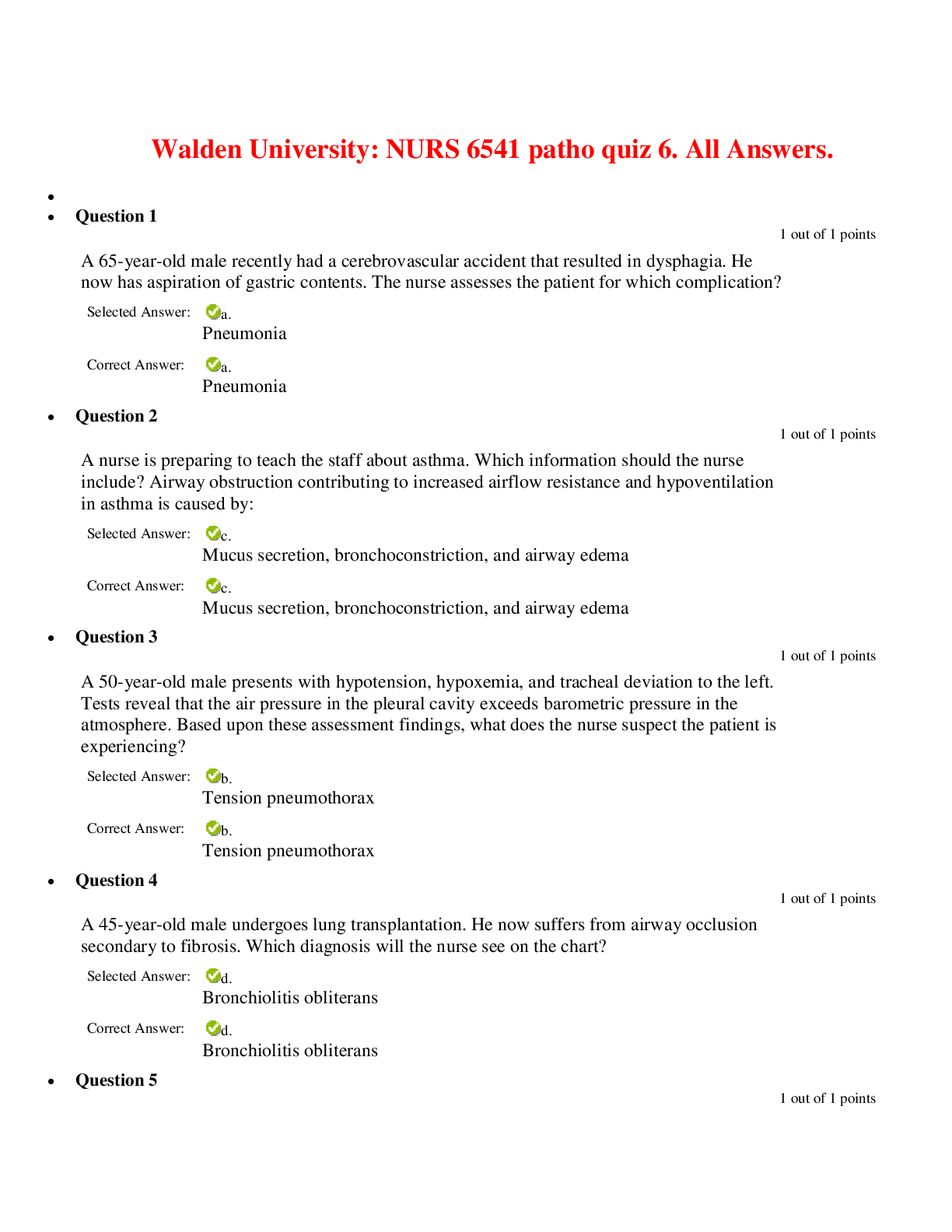





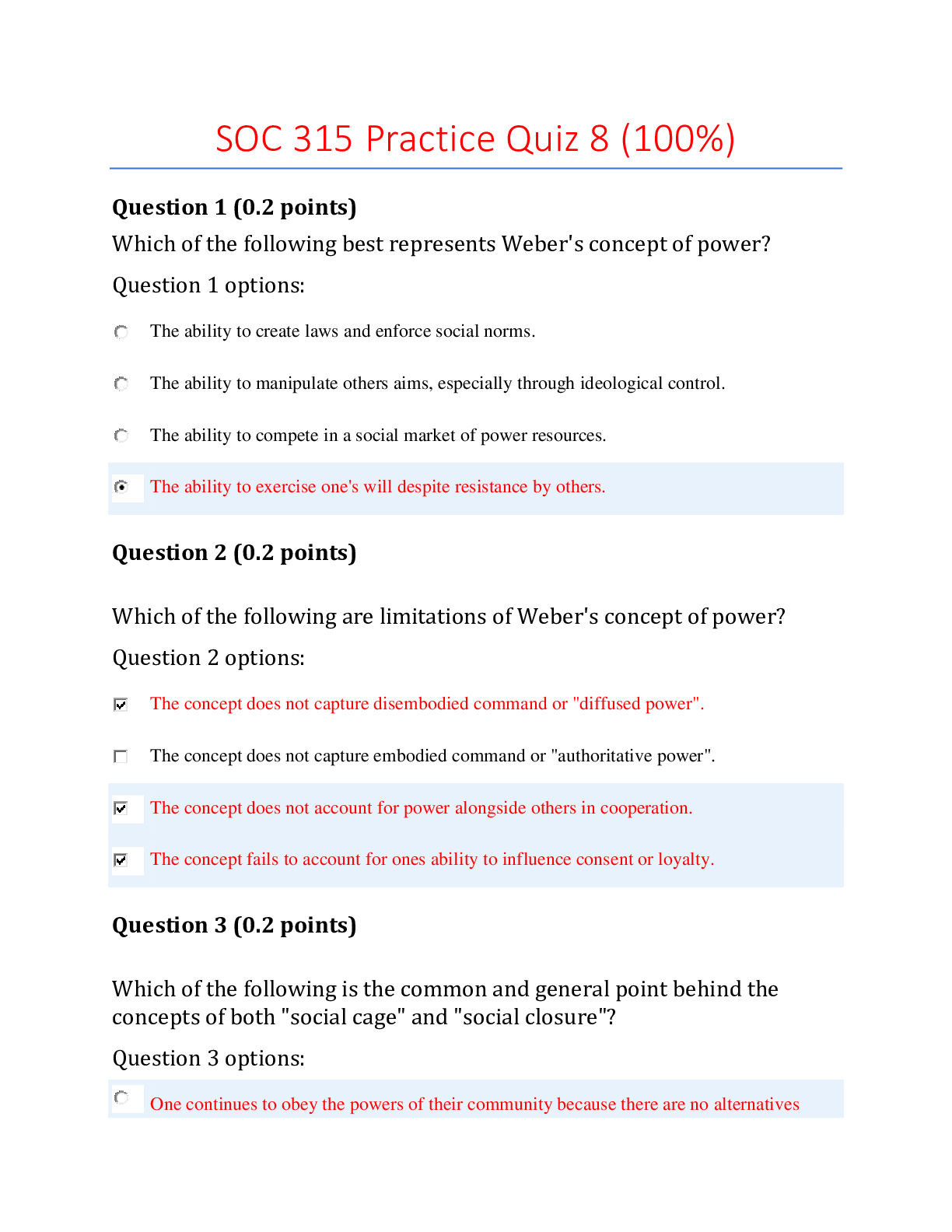
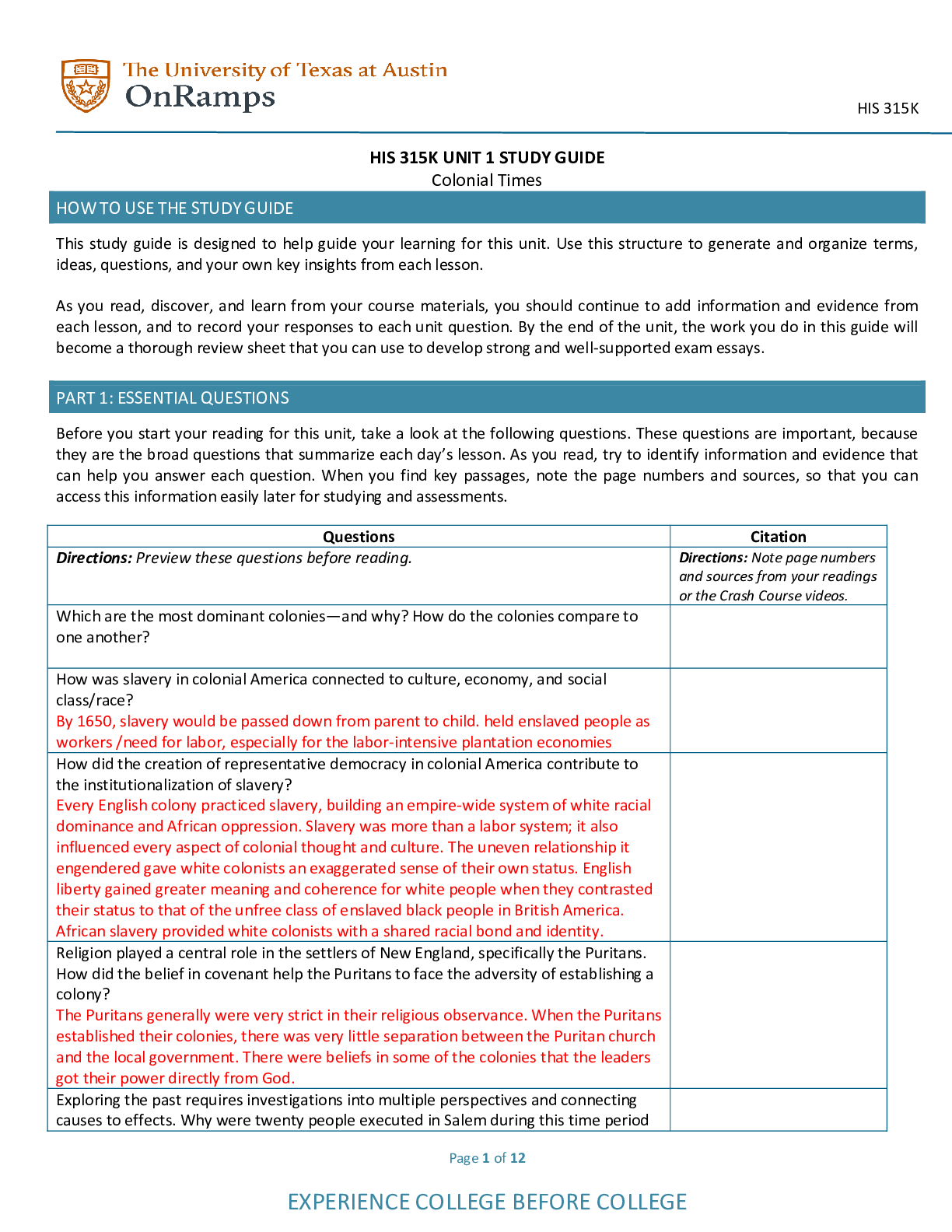
.png)

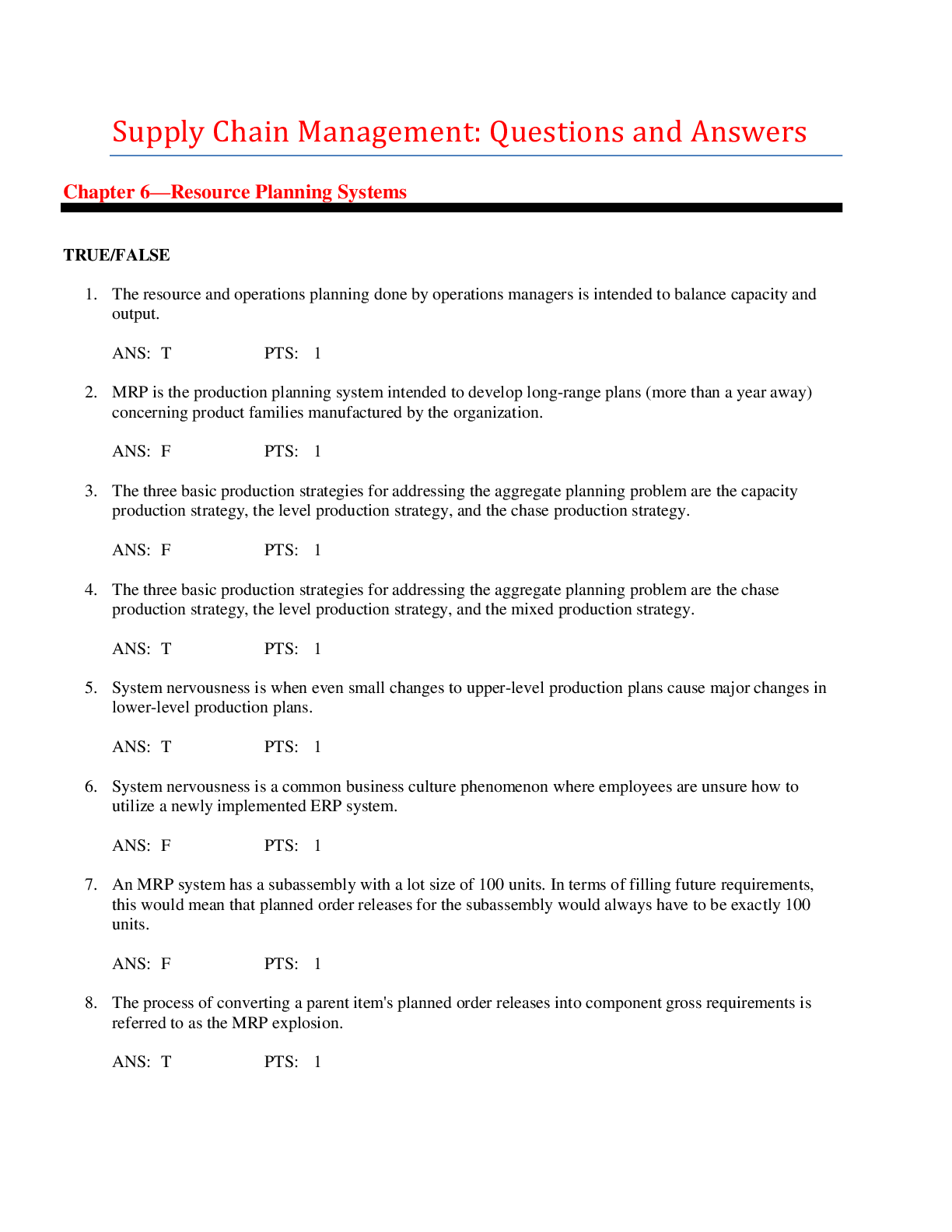
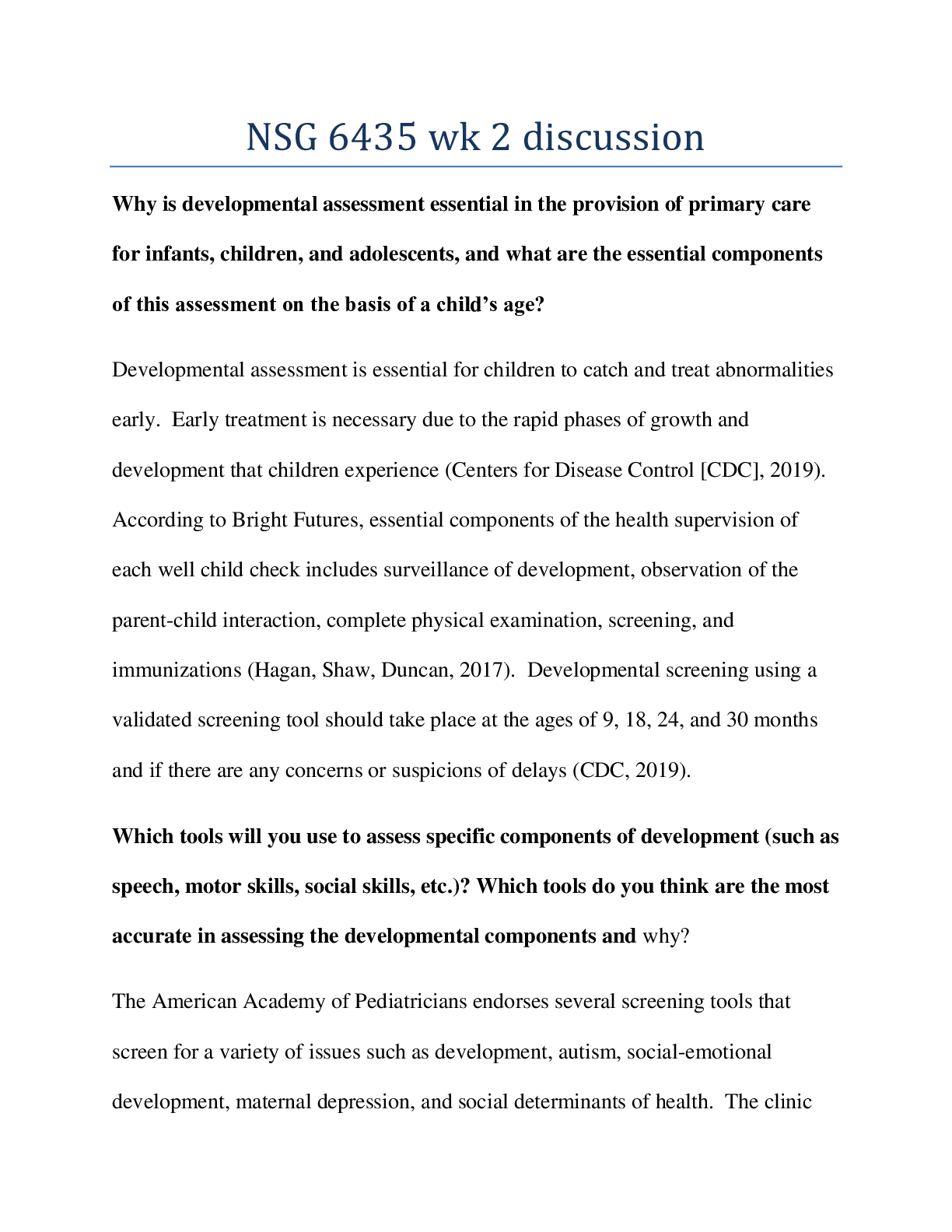
.png)

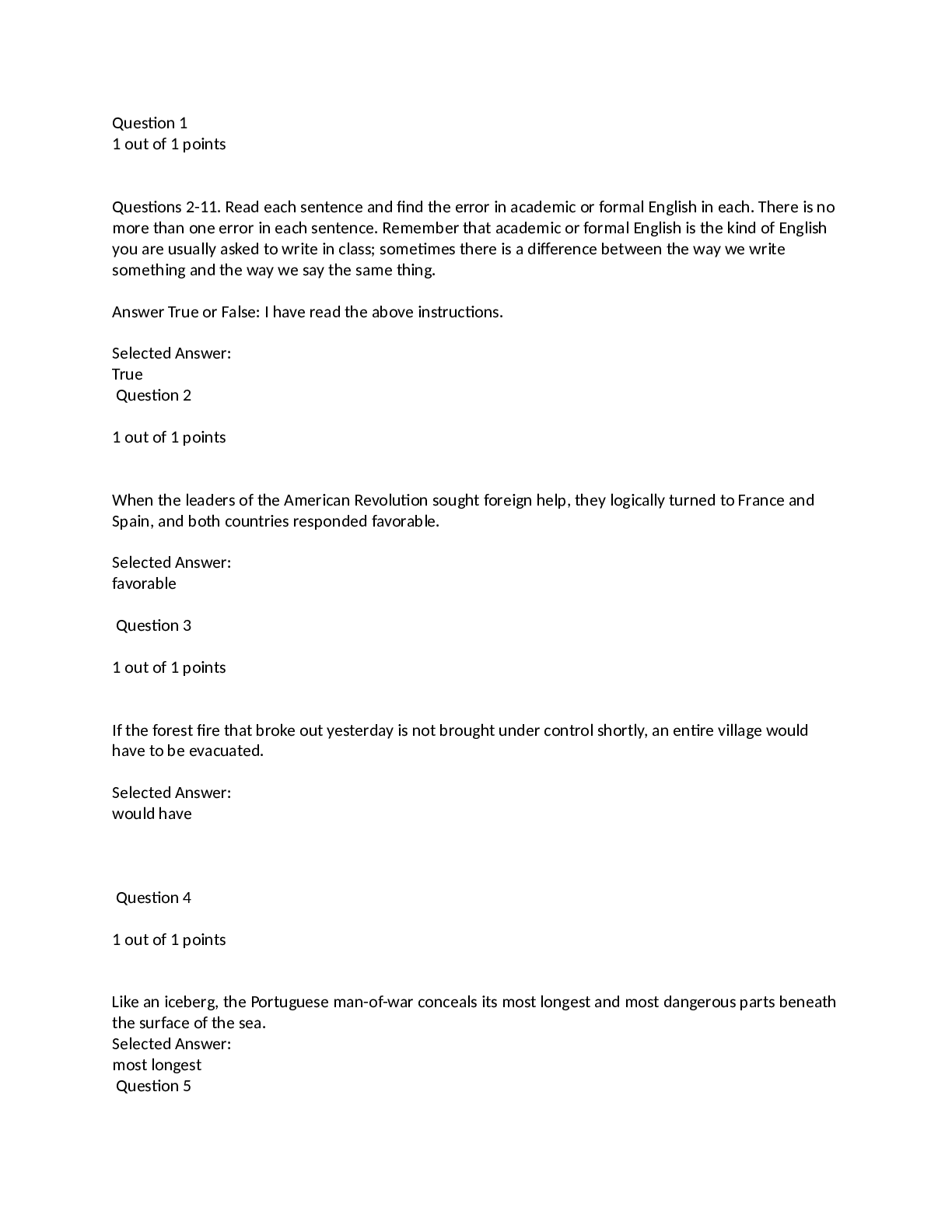
.png)
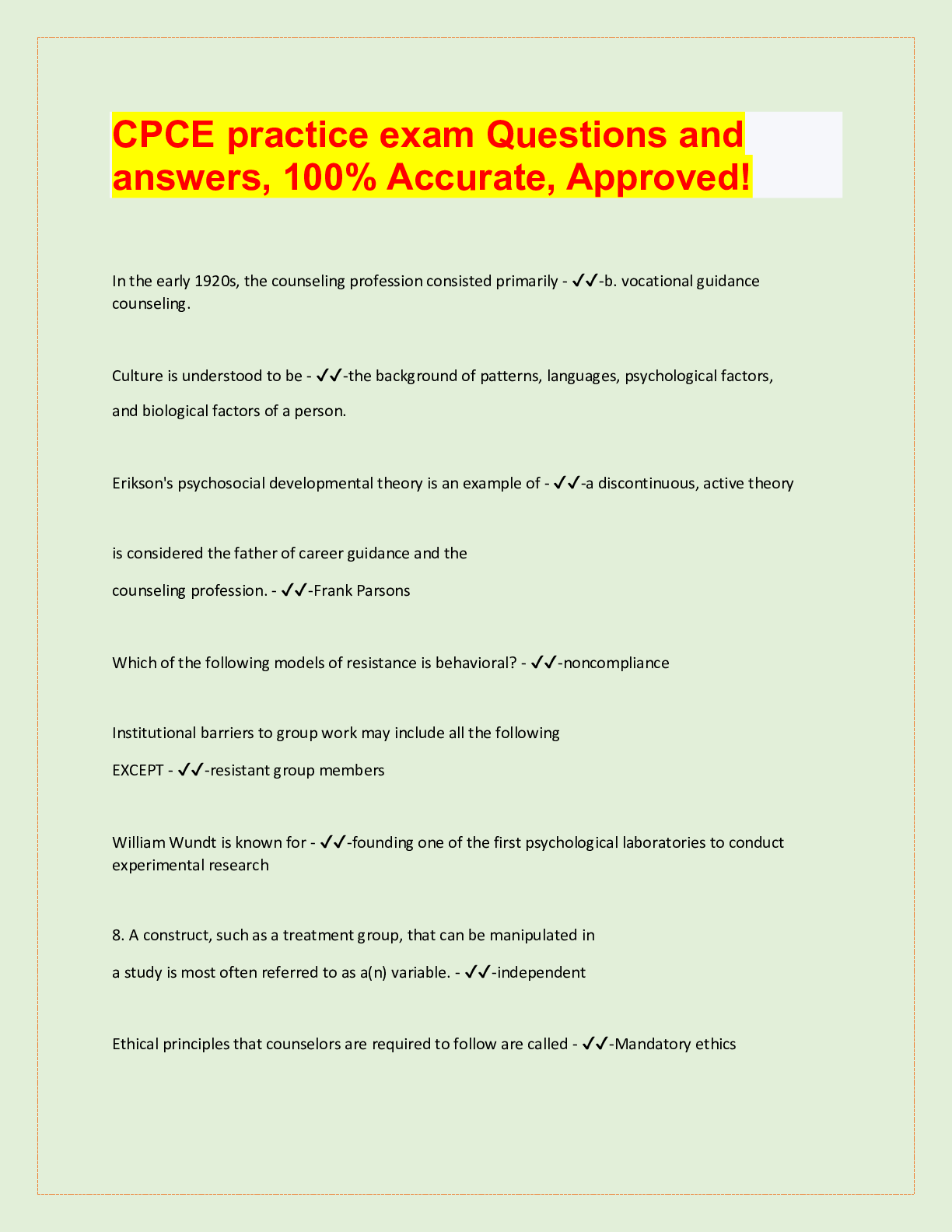
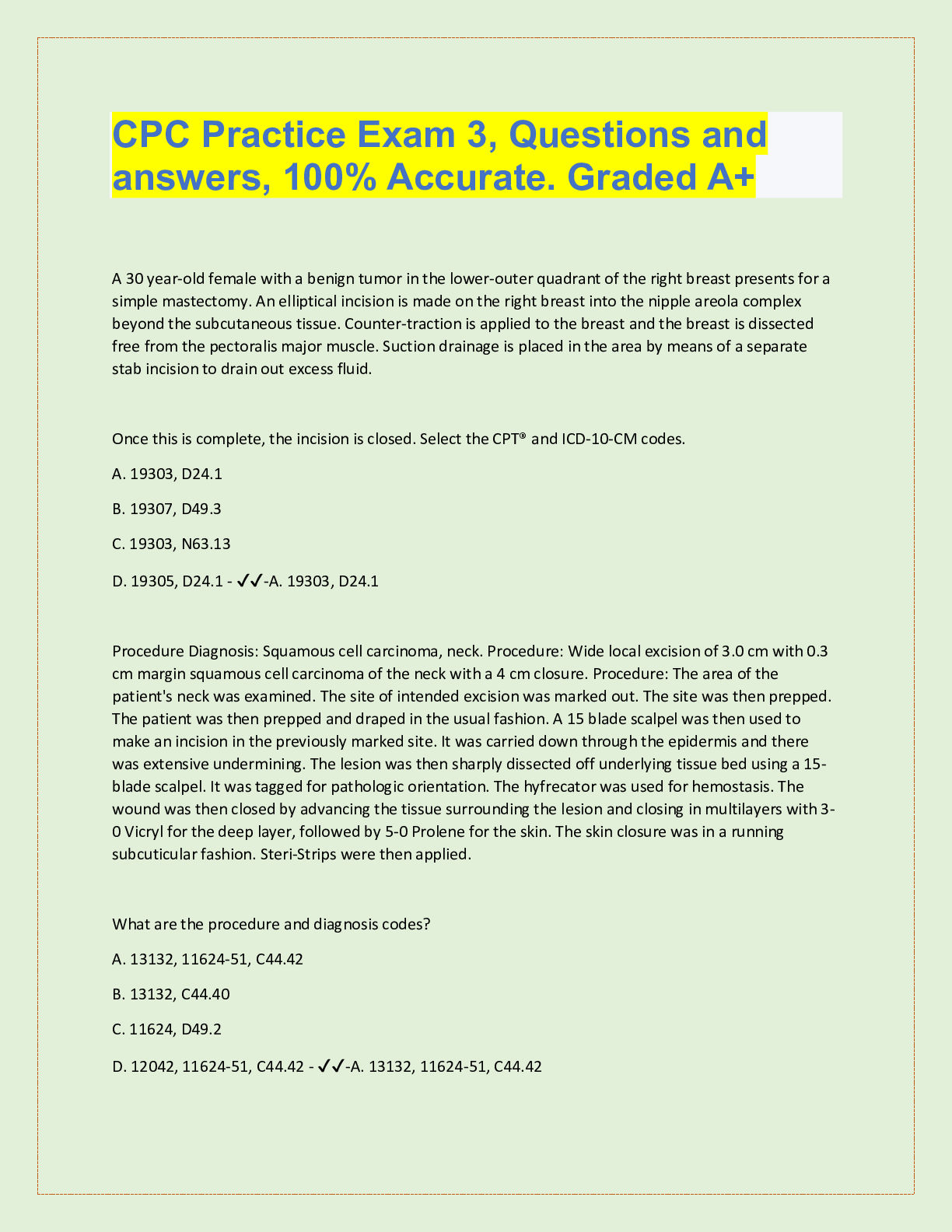
.png)

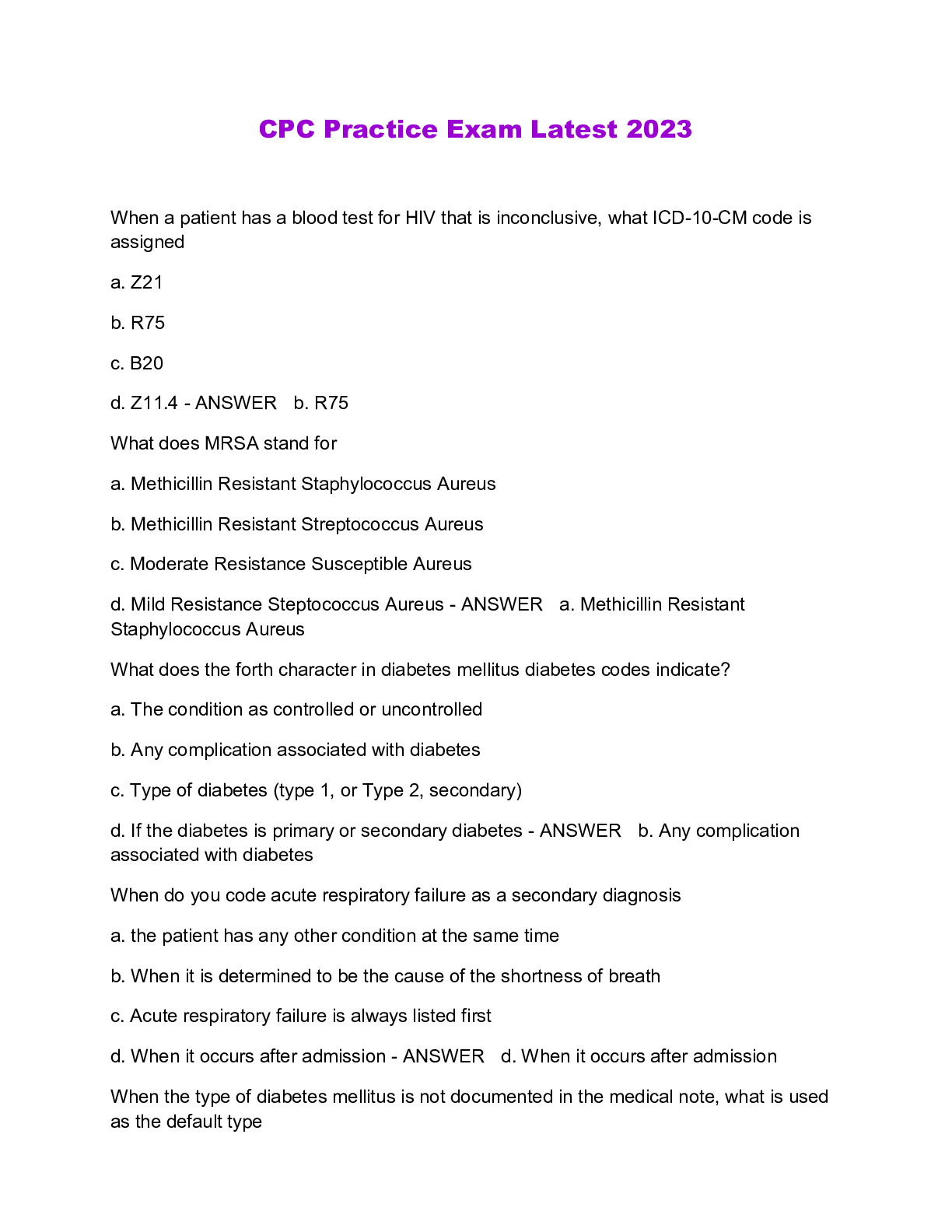
.png)


.png)

.png)
.png)

